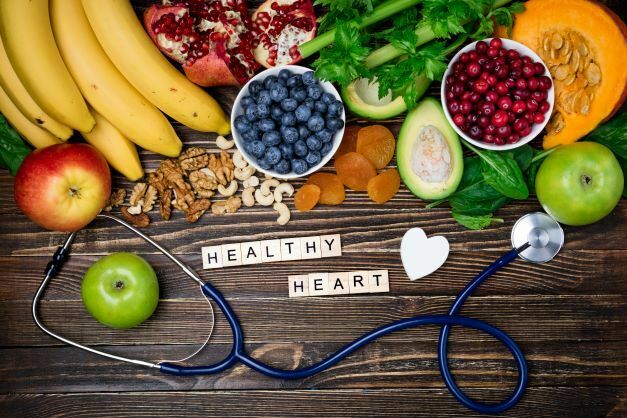The cornerstones to avoiding and controlling cardiovascular disease are a good diet and lifestyle. It’s not as difficult as you might imagine! Remember that what matters is the general pattern of your selections. Make these heart-healthy lifestyle tips a part of your daily routine for long-term health benefits.
Count your calories
To begin, determine how many calories you should consume to maintain weight. Food labels often provide nutritional and calorie information based on a 2,000-calorie-per-day diet. Depending on your age, gender, and level of physical activity, you may require less or more calories.
Eat a balanced diet
Eat a balanced diet that includes the following foods: fruits and vegetables of many types, whole grains, and products containing primarily whole grains and healthful protein sources such as legumes and nuts, fish and seafood, low-fat or nonfat dairy, and, if you eat meat and poultry, ensuring it is lean and unprocessed.
Minimize salt in your diet
High blood pressure, a risk factor for heart disease, can be caused by eating too much salt. Many people consume roughly twice as much salt as recommended. Many individuals are unaware that the majority of salt they consume comes from processed and packaged meals like canned foods, deli meats (such as ham and salami), and baked goods. One of the most effective strategies to lower salt intake is consuming more fresh, unprocessed meals like fruits and vegetables.
Healthy fats and oils should be included in your diet
Fats and oils can significantly increase your chance of developing heart disease. Varying types of fats have different effects on your health—healthy fats can help protect your heart, while harmful fats can raise your risk of heart disease. Choose foods high in healthy fats, such as avocados, olives, nuts, and seeds, and cook using healthy oils, such as olive, canola, sunflower, peanut, and soybean oil. These foods can aid with cholesterol reduction.
Avoid processed foods
Reducing your intake of highly processed foods is beneficial to your heart. Currently, highly processed foods are usually included in usual diet including cakes, biscuits, pastries, chocolate, chips, soft drinks, energy drinks, and sports drinks all include sugar. Food to go, such as pizza and burgers. These foods are typically heavy in added sugar, salt, and saturated and trans fats, and they do not belong in a heart-healthy diet. Only eat these items on rare occasions and in small amounts.
Live tobacco-free
Do not smoke. Avoid secondhand smoke or vapor by not smoking, vaping, or using tobacco or nicotine products.
Exercise regularly
Aim for 150 minutes of moderate physical activity or 75 minutes of strenuous physical activity (or a mix of the two) every week. Physical activity can assist you in maintaining your weight, losing weight, and achieving physical and cardiovascular health. If regular exercise is difficult to fit into your schedule, look for methods to incorporate short bursts of action into your daily routine, such as parking further away and using the stairs rather than the elevator. Your activities should ideally be spaced out during the week.
Manage your comorbidities
Comorbidity is linked to poorer health outcomes, more difficult clinical management, and higher medical costs. With the assistance of Remote Patient Monitoring (RPM), it is possible to virtually complete medical assessments of common comorbidities that professionals historically performed in person. Patients become more accountable and engaged in their care when they use RPM devices, which may lead to better adherence to treatment recommendations. The physician-patient connection may be strengthened as a result of this empowerment.
Read more:
Five Signs of an Unhealthy Heart You Should Not Ignore
10 Ways to Control High Blood Pressure through Lifestyle Changes
10 Simple Ways to Live a Healthy Lifestyle Amidst the Pandemic
5 Tips for Maintaining a Healthy Weight
5 Diet Tips to a Healthy Heart
If you have any existing chronic disease such as high blood pressure, heart disease, diabetes, obesity or COPD, you may ask your doctor about incorporating Remote Patient Monitoring (RPM) to your disease management and treatment. Contact us for more information.









